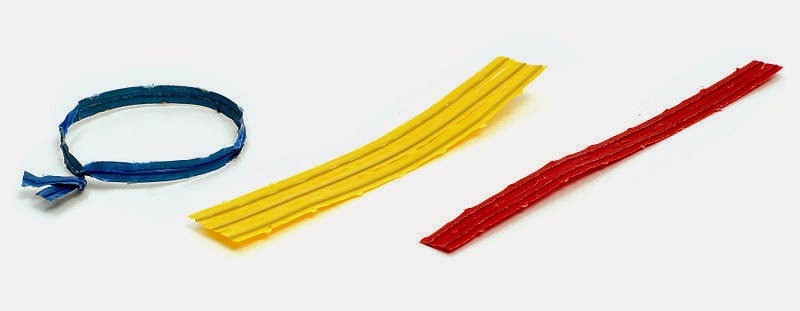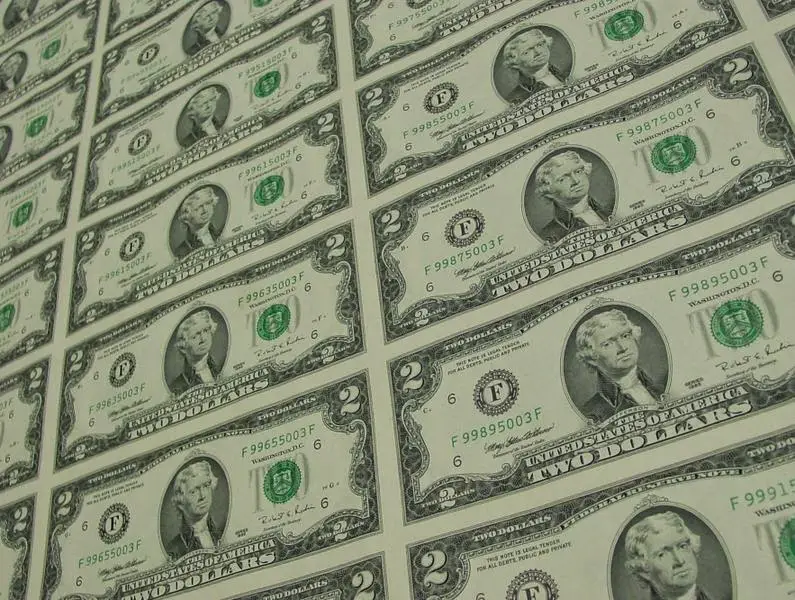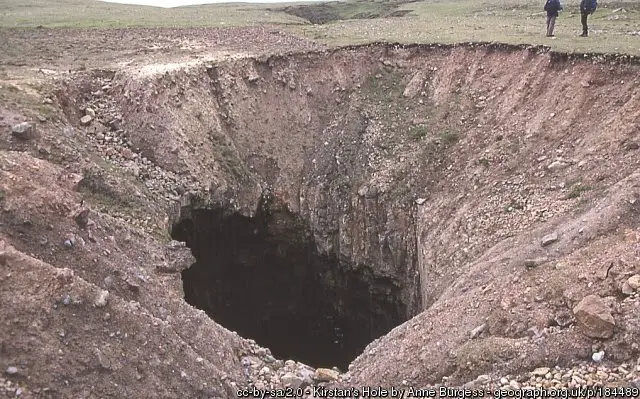 The weekly collection of useless and fun facts. In this week’s edition: Twist Ties, Rubik’s Cube, Ben & Jerry’s, Currency, and Big Holes.
The weekly collection of useless and fun facts. In this week’s edition: Twist Ties, Rubik’s Cube, Ben & Jerry’s, Currency, and Big Holes.
 The color of twist tie on a loaf of bread, or in many cases those tiny plastic clips, indicates what day of the week the bread was baked on. It’s not just to keep the contents fresh and from falling out, it’s used so that those stocking the shelves know when to pull “old” bread. This process of coding the bread makes the stocker’s job of replacing the bread much easier. Bread only stays around for a few days, and the color helps them determine when the old stuff has got to go. At most there will be two colors of tags present on bread shelves, depending on the delivery schedule of the bread to the grocery store.
The color of twist tie on a loaf of bread, or in many cases those tiny plastic clips, indicates what day of the week the bread was baked on. It’s not just to keep the contents fresh and from falling out, it’s used so that those stocking the shelves know when to pull “old” bread. This process of coding the bread makes the stocker’s job of replacing the bread much easier. Bread only stays around for a few days, and the color helps them determine when the old stuff has got to go. At most there will be two colors of tags present on bread shelves, depending on the delivery schedule of the bread to the grocery store.
There really isn’t any set color code to the day of the week the bread is baked on since bread manufactures each have their own system, so it’s possible that there could be a whole slew of colors inhabiting your grocer’s bread aisle. In the long run this won’t really allow you to get the freshest loaf unless your know your bread maker’s system, but at least you know those tags aren’t there just to look pretty.
 It may have caused you some heartache for years as you tried to get all those colored squares to line up. You may have even done the tried-and-true method of taking it apart, just so you could see what it looked like when it was supposed to be finished. It’s the formidable Rubik’s Cube, and it is the best-selling toy of all-time. The Rubik’s Cube was invented by Erno Rubik in 1974, and it has sold over 350 million units since that time. The Rubik’s Cube can be changed 43 quintillion ways, but it can be solved in just 20 moves. It’s quite amazing then that the world record for solving the cube is 5.55 seconds, which was set by Mats Valk of the Netherlands. But that isn’t the fastest time ever to solve the Rubik’s Cube. A robot made out of Lego blocks was able to solve it in 3.253 seconds. Don’t despair when you think how long it took you to finish it. It took the inventor, Erno Rubik, one month to figure it out.
It may have caused you some heartache for years as you tried to get all those colored squares to line up. You may have even done the tried-and-true method of taking it apart, just so you could see what it looked like when it was supposed to be finished. It’s the formidable Rubik’s Cube, and it is the best-selling toy of all-time. The Rubik’s Cube was invented by Erno Rubik in 1974, and it has sold over 350 million units since that time. The Rubik’s Cube can be changed 43 quintillion ways, but it can be solved in just 20 moves. It’s quite amazing then that the world record for solving the cube is 5.55 seconds, which was set by Mats Valk of the Netherlands. But that isn’t the fastest time ever to solve the Rubik’s Cube. A robot made out of Lego blocks was able to solve it in 3.253 seconds. Don’t despair when you think how long it took you to finish it. It took the inventor, Erno Rubik, one month to figure it out. |
| Hede2000/wikimedia |
In 2001, the ice cream company, Ben & Jerry’s, was purchased by Unilever, best known for their soap, for $326 million. But Unilever isn’t just a soap company. It is in fact the 3rd largest consumer goods company in the world and has over 400 products. Some of which are Dove, Hellmann’s mayonnaise, and Lipton. The acquisition was considered odd at the time, since the wacky flavored ice cream producer was known for its social activism and was being bought out by a multinational corporation based in Europe. The CEO of Unilever, Yves Coutte, was tasked to right the ship. He had to guide the ice cream maker into fiscal order since its stock price had been dropping steadily. It was going to be a challenge since the CEO had been known as the “Chief Euphoria Officer” in Ben and Jerry circles. Coutte started by arriving to the company in casual attire, volunteered for projects in the community the employees were involved in, and continued the philanthropy that the company was known for. It wasn’t all roses and puppy dogs however. Coutte knew changes had to be made for them to get a return on Unilever’s investment, so he downsized the staff and even closed a few plants.
 You can purchase large sheets of uncut U.S. currency through the mail. Not sure why you would want to, but you can do it nonetheless. It’s actually rather simple, as easy as going to the Bureau of Engraving and Printing’s website. You can purchase every denomination up to $100 bills. Even the $2 sheets are available. The $1 and $2 sheets go from 4 bills to a sheet, up to 32, while the $10, $20, $50, and $100 bills go from 4 to 16 on a sheet. Curiously, the $5 bill can only be purchased 4 to a sheet. But don’t think you’re going to get a sweet deal if you buy in bulk. The $100 sheets with 4 to a sheet are $480, while 16 bills to a sheet are $1,800. I’m no math whiz, but that’s one hell of a mark-up. It seems they are to be used as an art piece, since on the site they sell an acrylic frame to go with your new currency sheets.
You can purchase large sheets of uncut U.S. currency through the mail. Not sure why you would want to, but you can do it nonetheless. It’s actually rather simple, as easy as going to the Bureau of Engraving and Printing’s website. You can purchase every denomination up to $100 bills. Even the $2 sheets are available. The $1 and $2 sheets go from 4 bills to a sheet, up to 32, while the $10, $20, $50, and $100 bills go from 4 to 16 on a sheet. Curiously, the $5 bill can only be purchased 4 to a sheet. But don’t think you’re going to get a sweet deal if you buy in bulk. The $100 sheets with 4 to a sheet are $480, while 16 bills to a sheet are $1,800. I’m no math whiz, but that’s one hell of a mark-up. It seems they are to be used as an art piece, since on the site they sell an acrylic frame to go with your new currency sheets.
This isn’t something new for the Bureau of Engraving and Printing. They’ve been selling uncut currency since October 26, 1981. And that’s not the only thing you can get. How about buying a bag of shredded currency? You can pick up a bag at the Bureau’s Visitor Centers in Washington D.C. and Fort Worth, TX. If you want a bigger bag of shredded currency, specifically five pounds of it, you can order that through the mail. Interestingly, certain Federal Reserve Banks sell shredded currency under contract to buyers who will purchase all of it for one year, and the Treasury must approve its use. Two ways it is permitted to be used is as recyclable material in roofing or insulation, as well as in sealed novelty items such as pens and jewelry.

Putting certain pesky physics principles aside, if you drilled a hole through the middle of the earth and jumped in, it would take you 42 minutes and 12 seconds to get to the other side. Now this is to say you could survive to get to the other side and you wouldn’t be instantly crushed by the earth’s pressure as well as the temperatures that are estimated to be 10,800 degrees Fahrenheit, the same temperature at the surface of the sun. Also, take away the friction from air that you would generate from the speed of you body hurtling through the hole, at least for a while until the hole collapsed due to the intense pressure and temperature. You now have an exercise in futility. But what if it was perfect and somehow you could suspend all those things? For one thing, you’re going to be in for quite a ride.
You would accelerate initially, but as you began to approach the center of the earth, your acceleration would decrease. You would be weightless as you moved through the center of the earth while traveling at about 17,700 miles per hour. You would zoom out the other side after a lovely 42 minute journey. But that’s not all. If you didn’t use something to stop yourself, you would take a return journey through the middle of the earth just like a mass on the end of a spring, according to Hooke’s Law. That would be quite a trip.
Another edition of the Useless Facts of the Week is complete. Remember to annoy those around you with your new found knowledge.
Past Issues of the Completely Random Facts of the Week


